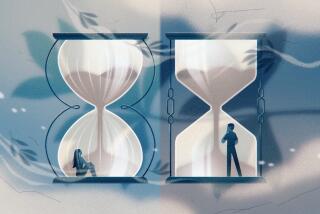Exercise Is Key to Curbing Bone Loss, Study Says
- Share via
CHAPEL HILL, N.C. — Exercise is the key for women who are especially susceptible to bone-density loss after menopause and risk fractures from falls that would only bruise a younger woman, a new study says.
“Some will have a collapse of the vertebral body (a bone in the spine) from a sneeze,” said Dr. Peter Jacobson, who led a five-man University of North Carolina team comparing bone densities for athletic and non-athletic women between the ages of 23 and 75.
“I think it’s a reason, for women especially, to get active or remain active,” said Jacobson.
He said the study, appearing in the Journal of Orthopaedic Research, had found bone density was 15% to 20% greater among athletic women in the older group than among non-athletic women of the same age.
“Some people say the cat’s out of the bag when you’re 40 years old,” Jacobson said. “If you’re 40 or 50 and you didn’t do anything (athletically) as a kid, it’s not too late to maintain what you have.”
Jacobson said the loss of bone density increased with age until it was “straight downhill from age 50 for the next 20 or 25 years.”
He said the study, along with earlier work on Skylab astronauts, indicated the benefits stem from “increased gravitational stress” on the skeleton, although he said the exact mechanism is unknown.
Jacobson said women who want to benefit from exercise do not have to go to extremes.
“We’re looking at women with very reasonable, achievable kinds of exercise. The tennis players play about three times a week for the better part of the year, maybe eight or nine months,” he said. “They aren’t necessarily very good players, but they are serious about it. We’re just looking at normal women who stayed relatively active.”
The study found little difference in bone density between athletes and non-athletes between the ages of 35 and 50.
Researchers tested bone density in the wrists and spines of 11 intercollegiate tennis players, 23 swimmers and 86 women ages 23 to 75 who were considered “athletic”--meaning they exercised three or more times a week, eight or more months a year for at least three years.
Athletic subjects were compared with sedentary women of the same age, based on densitometer readings of the wrist and back. The photon densitometer works like an X-ray machine but uses light rays to get readings, Jacobson said.




